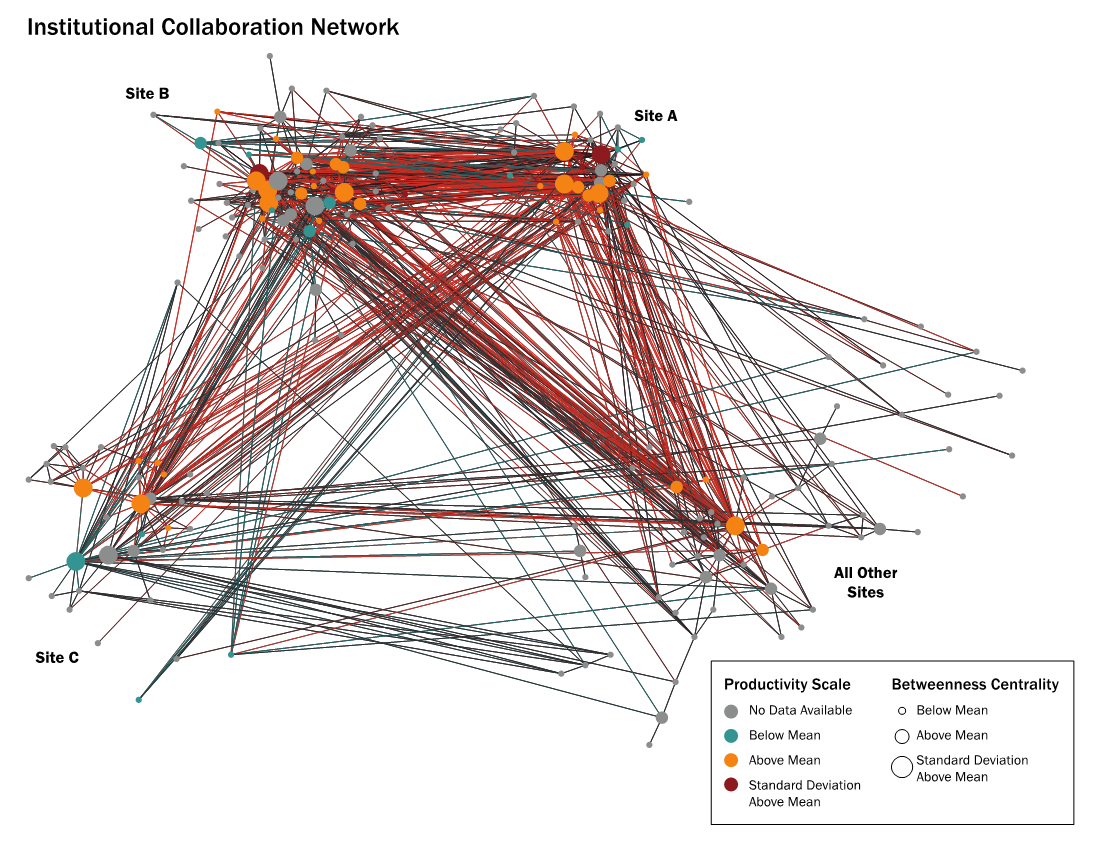
A social network graph illustrating betweenness centrality (a measure of how an individual connects groups within an organization) and self-reported productivity across three major research sites and other geographically distributed people. Two sites have relatively high numbers of well-connected individuals and above-average productivity levels, while Site C and all other sites reported more moderate betweenness centrality and productivity scores.
Inclusive feedback: Making face-to-face meetings more productive
Issue: While some parts of large, interdisciplinary projects can work independently, many research, education, and extension opportunities demand coordination across geographically distributed groups. Good ideas and important information can come from anyone in the project, but electronically supported virtual meetings place limits on the number of people who can meaningfully participate and face-to-face meetings are resource intensive.
Action taken: We used interviews and four annual qualitative surveys of REACCH researchers, graduate students, and other professionals to understand what project management and coordination activities were needed to support the project. The online survey used open-ended questions regarding which project management and coordination activities participants deemed successful and which needed change. In addition, one question asked for other comments and suggestions that respondents wanted to share with the entire project.
Response rates varied between 77% and 88% over the four annual surveys. To help respondents share controversial or otherwise difficult issues, respondent anonymity was protected.The results were synthesized into a report and sent back to the respondents one week before the annual meeting. At the annual meeting, these results helped define the key questions for a set of large-group dialogues and solution-finding exercises.
Results: Including everyone supported by the project and protecting respondent confidentiality helped uncover some challenging project-wide issues that could then be discussed openly, better understood, and resolved. The long-term impacts of our work include graduate students and faculty who are able to address the many the challenges of large, interdisciplinary projects by applying the tools, methods, and models we used during the REACCH project. Participating researchers will also be better able to identify and use project-wide feedback to strengthen future project proposals. We have shared the tools, methods, and models we developed and applied in the REACCH project at two professional conferences focused on team science and evaluation.
Results Published In:
- Meyer, D. C. 2014. A mixed-method approach to understanding team science: Working towards useful feedback. Paper presented at the Science of Team Science Conference, August 2014, Austin TX.
- Meyer, D. C. 2016. Designing for multiple targets: A mixed-method approach to interdisciplinary research assessment. Paper presented at the American Evaluators Association Conference, October, 2016, Atlanta, GA.




